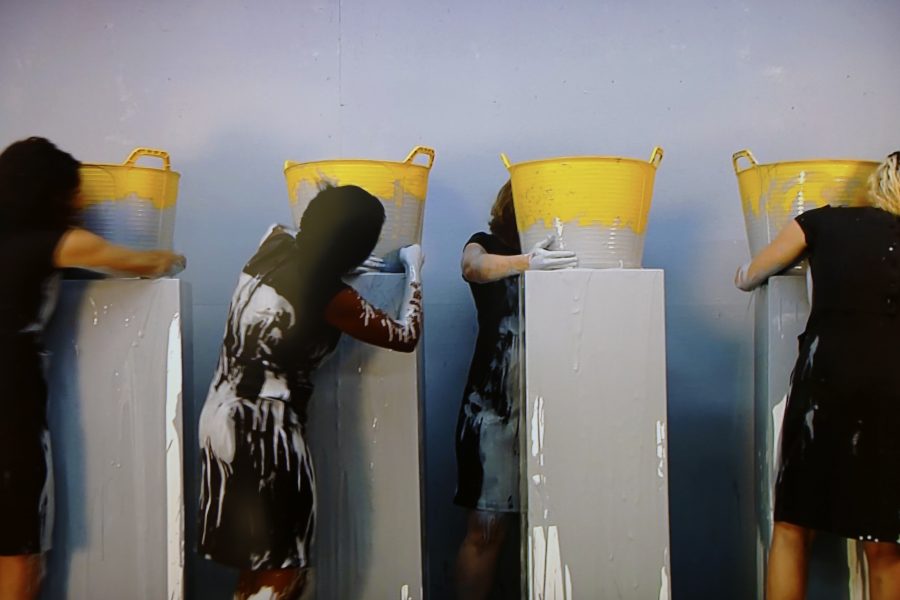Gendered perceptions of strength and authority have sustained a conversation behind generations of artwork, music and powerful performances depicting strong female protagonists. Conversations and disagreements have made headlines for years and in this riveting era of new voices, Kate Gilmore joins the many women prepared for the uphill battle.
Kate Gilmore is a Washington, D.C. born artist living and working in New York City, who attacks gender tropes specifically in regards to traditional authority, strength and the power dynamics of the art world.
The exhibition “Kate Gilmore: In Your Way” features nine performance-based videos combating the norm on “gender-ability” through depictions of feminine stereotypes and labor-intensive activities. The women embody a generic idea of what a “woman should look like,” yet they reach past the screen with their intense individuality in the way in which each woman throws her clay on anguish or punches through the wall.
“In Your Way” becomes a narrative of these women who fight against the ignorance of “specified gender ability.” What can a woman do? Gilmore proposes that there is no limit. Each performance is a reminder that, although we are separated by a video screen, these women are real and undertake these acts in reality. Our perceptions of gender are controlled by the pretty dresses and heels, yet we can hear the grunts of exasperation and see the messy actions unfold before us.
Gilmore uses tasks such as throwing clay, punching walls, and stopping a leaky hole to be metaphors of traditionally masculine actions and male-dominated artistic practices—Minimalism and Abstract Expressionism—yet she reminds us that an action calls for no specific gender.
Strength has no specific gender. Art has no specific gender. Although she walks a thin line into the realm of politics, her works remain light-hearted and powerful, with slight sarcastic gestures thrown around to remind us of the idiocy of it all.
Art history plays a role in her work as well. As she alludes to these older artistic movements dominated by men, she uses performance and video (contemporary media) to portray how she views her place in the world.
“In Your Way” is an ode to women being women. It portrays simply and beautifully that women are just bad-ass—and art is no exception.




















































































































